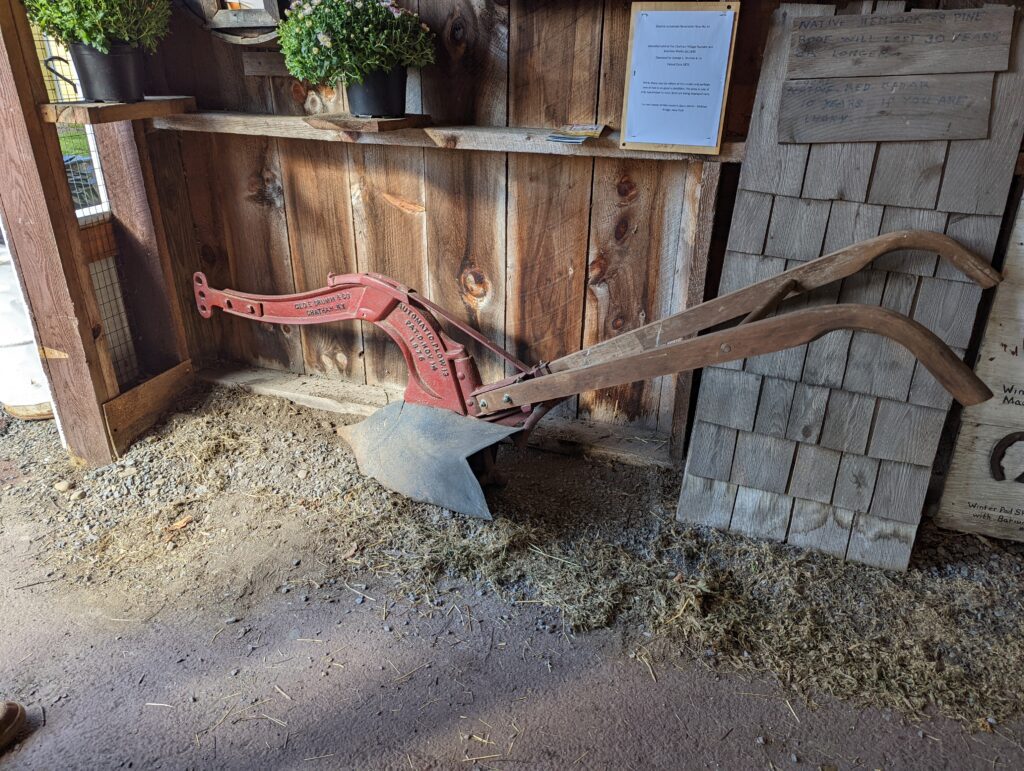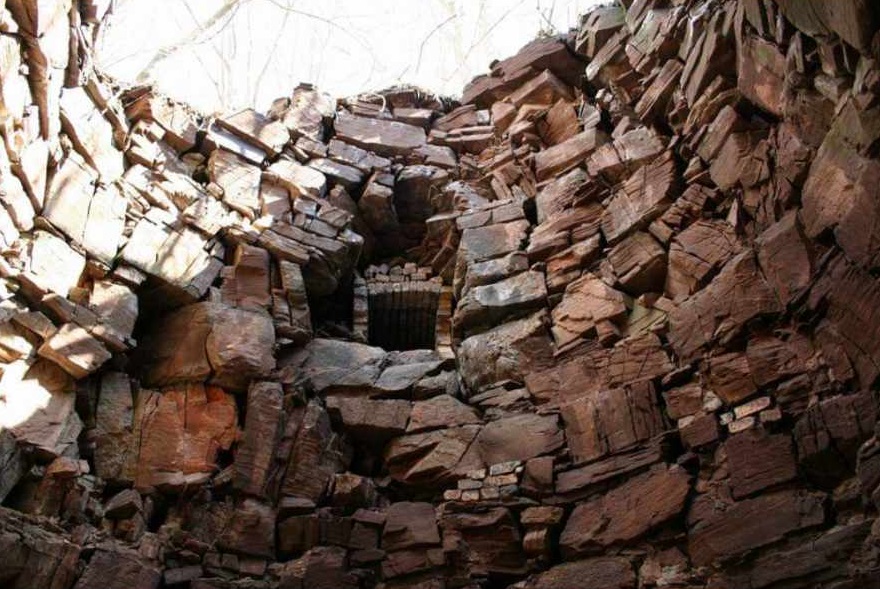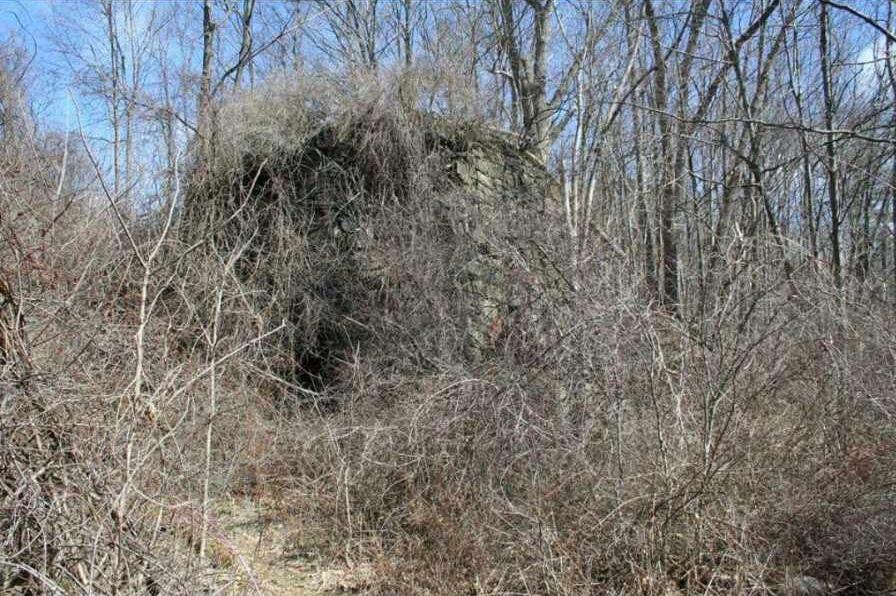by Gail Blass Wolczanski
Originally published 2014
Iron ore shipped to South Boston Iron Company from the Chatham Smelting Company was used to make ordnance for the United States Army and Navy at the turn of the last century. The Chinese government ordered Chatham’s iron ore to make cannons. To this day, adventurers who wander the shore of Steinkill Creek, may find colorful remnants of this lost one hundred year old village industry in the form of pieces of cast off slag.
Eight buildings constructed between 1872 and 1876 clustered on the northwest side of the creek along Fairview Avenue. One structure housed the engine room and boiler room. Described as one of the showplaces in the village in a 1914 news article, the engine room was maintained with pride by Mathew Powers and Michael Glynn. “The room itself was the acme of cleanliness, the engine, their particular pride, worked with mechanical perfection as the result of their constant care and watchfulness, as the two large wooden shafts or beams which it operated moved backward and forward, operating the huge bellows which provided the draft necessary for the melting of the iron ore. Two horizontal boilers, resting in their casing of brick provided the steam for the operation of the engine and the gas from the charcoal was the fuel which generated the steam.”
The furnace blast was said to have sounded like a jet engine. Yet the sound resonated through two large cylinders connected to a twenty-foot diameter overshot wheel. A large building housed the West Pittsfield iron ore and limestone from Stockbridge, Massachusetts, brought in by a spur of the Rutland Railroad. Another building held coal brought by rail from Petersburg or by horse from Florian and Amose Bills’ charcoal kiln in Austerlitz. “Laborers begrimed by the dust of the charcoal to the point where they were well nigh unrecognizable, dumped the coal from their iron carts into the capacious yaw of the stack where likewise was emptied the cartloads of ore.” The raw material was dumped in crashers and pulverized into small bits to be fed into the furnace along with the coal.
The moulding buildings received the hot iron that was run into forms called pigs. “-the artisans fashioned in the sand the channels to be followed by the molten metal as it emerged, several times each day, from the cupola and from which channels it was removed in “pig” form when cool. From this cupola also ran the glass-like dress or waste in hundreds upon hundreds of tons of which were drawn to nearby points in dump carts and thrown down embankments which finally because level expanses thus placing a value on land that had formally been of little worth.”
When the Panama Canal was to be constructed, the United States government requested a sample of this iron ore. Chatham’s was reported to be the best quality ore submitted. However, despite the 24 hour a day, twenty-five employees working in 12 hour shirts, six days a week, their output was not enough to supply the government’s needs for the monumental undertaking.
The order for 300 tons of iron by the South Boston Iron Company at the turn of the last century buoyed the local industry but it closed in 1914 with false hope of reopening one day. A fire dashed those plans. There was no insurance. Flames upwards of 75 to one hundred feet leveled all of the buildings but three. Fortunately, the wind whipped the flames away from the former furnace office that stood a short way from the ore shed. By that time it had been turned into a residence.
Keep in mind that the Blinn-Pulver Farmhouse on Hudson Avenue was deeded in 1814. John O. Blinn, Philo Blinn’s son, would have experienced the spectacular fire that lit up the hillside along the Steinkill Creek as he continued to farm his father’s land. The farmhouse has now stood witness to 210 years of Chatham Village History.

Does the Chatham Village blast furnace still exist?
Well…it’s remains do. On a hillside just off of route 66, just past the remains of the Rutland Railroad elevated line, an eagle eyed explorer might spot the following.


